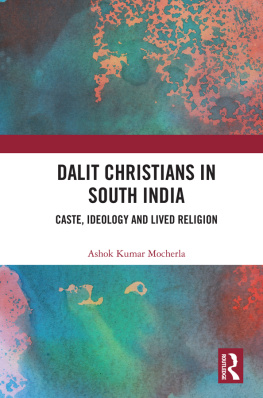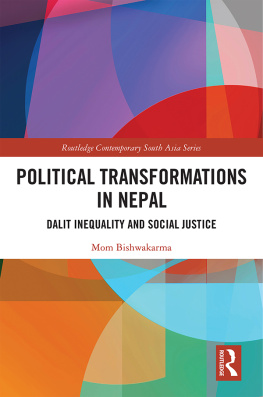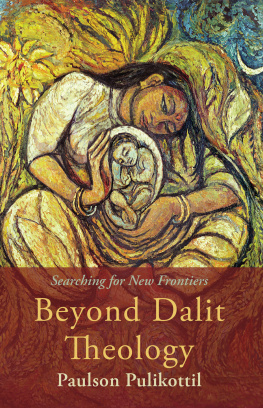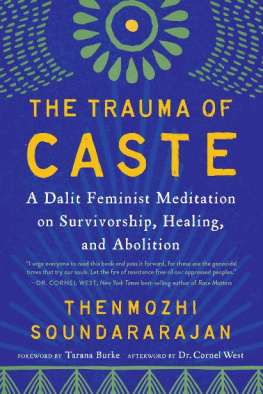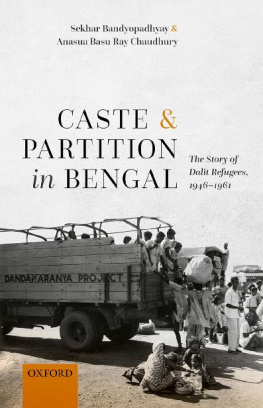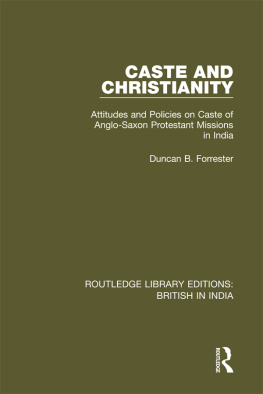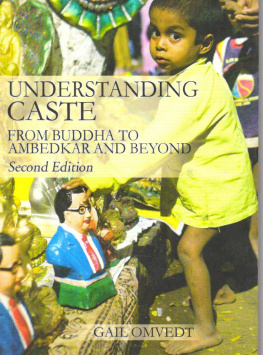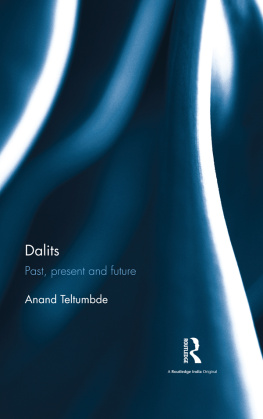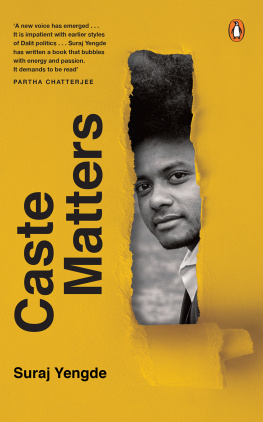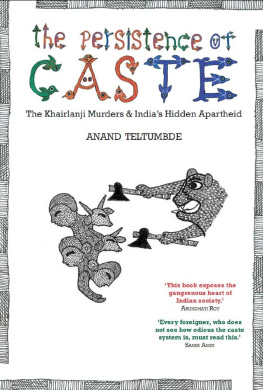Dalit Christians in South India
This ethnographic study of Dalit Lutherans in South India examines how the lived religion of Dalit Christians contests the structures of caste domination in rural Andhra. It shows how the emergence of Dalit Christianity generated new religious ideas, patterns, terrains, rituals, and practices that challenge the traditional notions of caste privilege and impact the politics of the region. It highlights the transforming role of Dalit agency in the development of Christianity, which is largely unexplored in the studies of Christian missions and anthropology of Christianity in India. The book looks at the social history of Christianity, critical events of protest, platforms of community politics, caste ideology, and local politics and interlocking of caste with congregation to provide a constructive critique of the dominant paradigm of the Dalit movement, which often treats Dalits as a homogenous social group. It discusses the pragmatic changes within the politics of Dalit Christianity as viewed from the margins of Indian society and incorporated through engagement with political ideologies (from communism to the Ambedkarite movement) and religious belief systems (from Hinduism to Christianity).
This volume at the intersection of religion and caste will be an essential read for students and researchers of Dalit studies, political studies, sociology, sociology of religion, religious studies, social justice and exclusion studies, and South Asian studies.
Ashok Kumar Mocherla is Assistant Professor of Sociology in the School of Humanities and Social Sciences at the Indian Institute of Technology (IIT) Indore, India. His academic interests include sociology of religion, caste, faith healing, and missionary medicine.
Dalit Christians in South India
Caste, Ideology and Lived Religion
Ashok Kumar Mocherla
First published 2021
by Routledge
2 Park Square, Milton Park, Abingdon, Oxon OX14 4RN
and by Routledge
52 Vanderbilt Avenue, New York, NY 10017
Routledge is an imprint of the Taylor & Francis Group, an informa business
2021 Ashok Kumar Mocherla
The right of Ashok Kumar Mocherla to be identified as author of this work has been asserted by him in accordance with sections 77 and 78 of the Copyright, Designs and Patents Act 1988.
All rights reserved. No part of this book may be reprinted or reproduced or utilised in any form or by any electronic, mechanical, or other means, now known or hereafter invented, including photocopying and recording, or in any information storage or retrieval system, without permission in writing from the publishers.
Disclaimer: The views and opinions expressed in this book are solely those of the author and do not necessarily reflect those of the publisher. The analyses and data based on research material and fieldwork are intended here to serve general educational and informational purposes and not obligatory upon any party. The author has made every effort to ensure that the information presented in the book was correct at the time of press, but the author and the publisher do not assume and hereby disclaim any liability with respect to the accuracy, completeness, reliability, suitability, selection, and inclusion of the contents of this book and any implied warranties or guarantees. The author and publisher make no representations or warranties of any kind to any person, product, or entity for any loss, including, but not limited to special, incidental, or consequential damage, or disruption alleged to have been caused, directly or indirectly, by omissions or any other related cause.
Trademark notice: Product or corporate names may be trademarks or registered trademarks, and are used only for identification and explanation without intent to infringe.
British Library Cataloguing-in-Publication Data
A catalogue record for this book is available from the British Library
Library of Congress Cataloging-in-Publication Data
A catalog record for this book has been requested
ISBN: 978-1-138-36679-4 (hbk)
ISBN: 978-1-003-04510-6 (ebk)
Typeset in Sabon
by Apex CoVantage, LLC
Dedicated in fond and loving memory of my late father:
Tulasi Rao
| ACTC | Andhra Christian Theological College |
| AELC | Andhra Evangelical Lutheran Church |
| BC | Backward Class |
| CBM | Canadian Baptist Mission |
| CHAI | Church History Association of India |
| CMS | Church Missionary Society |
| ELM | East London Mission |
| FMS | Foreign Missionary Society |
| FMSEGC | Foreign Missionary Society of the Evangelical German Churches |
| GPM | Gospel Peace Ministries |
| IIT | Indian Institute of Technology |
| IMC | International Missionary Council |
| ISPCK | Indian Society for Promoting Christian Knowledge |
| LMS | London Missionary Society |
| MABS | Madras Auxiliary Bible Society |
| NGMS | North German Missionary Society |
| OBC | other backward classes |
| PRP | Parish Restructuring Programme |
| PSP | Praja Shanthi Party |
| SC | Scheduled Caste |
| ST | Scheduled Tribe |
| VBS | Vacation Bible School |
| WMS | Womens Missionary Society |
Ashok Kumar Mocherlas doctoral research, which has culminated in this book, explored the social and religious worlds of the Malas in coastal Andhra Pradesh in a village that he termed Dravidapuram. This Dalit community converted in large numbers to Lutheran Christianity, and the author charts briefly the historical trajectory of those conversions. He argues throughout the book that Christianity is a form of political awakening and consciousness for the Dalits of this region and that the Dalit movement cannot be comprehended without understanding local Christianity. The structures of the church and congregation and the practices of Lutheran Christianity in the Telugu coastal countryside are enmeshed with Mala caste organization. The sangham is effectively both congregation and caste body, and its elders lead both caste and church. While marginal to caste society, the Dalits in this region live in largely caste-dominated villages. Hence, their consolidation into the sangham and the dominance of the sangham in the everyday religious and social life of the people of the village is more easily facilitated. Iconic images and symbols from the broader Dalit political movement are integrated with the collective celebrations and ceremonies of the Mala Lutherans, which link the Mala Lutherans with Dalits outside of this region. However, the incorporation of such symbols and icons into local religious practices does not produce a homogenous Dalit identity that marks the group. Rather, what is produced is a particular and specific form of local Dalit Christian identity that needs to be understood and examined in its context.
This book traces in detail crucial aspects of the Mala socio-religious world: the fact that they need to manage their legal Hindu identity in relation to their lived Christian one, the shift to and implications of being recipients of Dalit Christian pastoral care from having lived on the margins of Hindu religious life, and the way in which Ambedkar becomes a part of particular church celebrations centred around the birth of Jesus Christ. The author makes the larger point that Dalit Christians in this Telugu region are at the forefront not merely of the leadership of their own churches and caste sanghams but of the mainstream Andhra Dalit movement. It is precisely the merging of caste and religious identity that creates a level of cohesion and enhanced organization, enabling the possibilities of political action. Gelled into one community as co-celebrants and congregational members, the Malas of this region are also disciplined into collective unity by the threat of excommunication from the church if they disobey the diktats of their sangham leaders. The centrality of the church to the lives of the Dalits makes this into a very potent threat. This politically acute understanding of the Mala Lutheran church is one of the important contributions of this work, apart from its clear analysis of lived religion at the village level.

